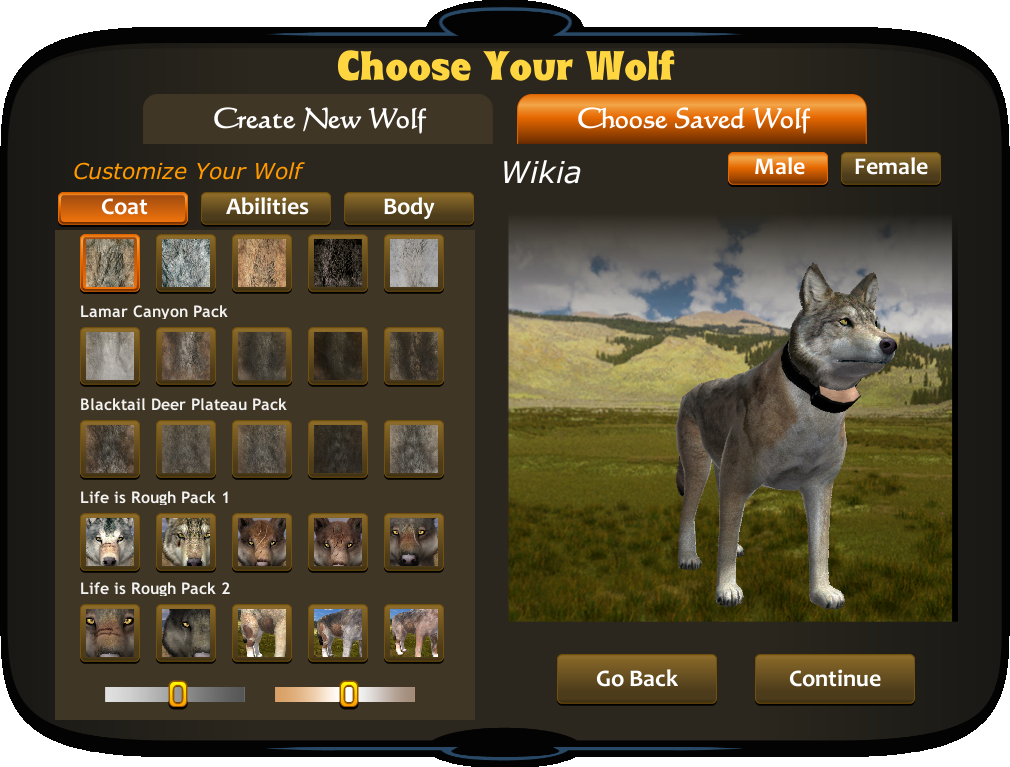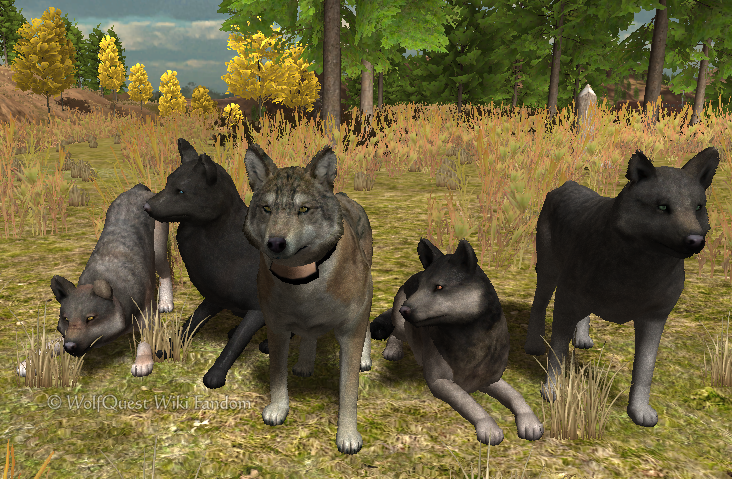Google defines gamification as: “the application of typical elements of game playing (e.g., point scoring, competition with others, rules of play) to other areas of activity, typically as an online marketing technique to encourage engagement with a product or service.” The concept of “gamifying” something has existed for centuries, yet most people aren’t aware of the benefits of using games for reasons other than entertainment.
Gaming elements can be implemented in a variety of ways — one example is education. Everyone has taken a class where they’ve struggled to pay attention or stay awake. By gamifying a lesson or a topic, teachers can keep students more engaged and even trigger genuine interest in some of them. An example of a game that I feel succeeds in educating while being entertaining and beneficial is WolfQuest.
WolfQuest 2.7 (the most recent version) is an educational game developed by the Minnesota Zoo, EDU Web, the International Wolf Center, and the National Science Foundation. The website describes the game as “a 3D wildlife simulation video game about gray wolves and the ecology of Yellowstone National Park” (WolfQuest.org). With support and scientific based mechanics, the developers aim to educate players about the lives of wolves who live in Yellowstone. In 2010, WolfQuest won the Education Award from the Association of Zoos and Aquariums.
I first played the game when it came out back in 2005. It was free and in terms of graphics, pretty basic. But being an avid tree-hugger and nature junkie, I was intrigued. The game’s goal is pretty straightforward: You play as a two-year-old lone wolf born in the Northern Range of Yellowstone National Park in search of food, shelter, and a mate. Hopefully, you meet other wolves to join your pack.
Mechanics
Rated TEEN, WolfQuest has both a single-player and a multi-player option, where players can join with other wolf packs online. Private and public servers are available to keep it kid-friendly. I’ve played online with other people, and things got pretty vulgar in the chat room from time to time.
I played the newest version on my Android, and the game has had some great updates. It runs smoother than the last time I played (even on a smartphone), and the graphics are slightly better. The game begins as any other first-person style of game: you create an avatar. In this case, a wolf. Customization is limited to male/female, general strength, stamina and speed, and the coat color. In the most recent version, you can add quirks to your wolf such as notched ears, a radio collar (placed by wildlife scientists tracking wolves in the wild), a limp, and more. These are features you have to unlock, however. You can also choose the type of howl your wolf has.
Because it’s meant to be realistic, you can’t just create a rabid killing machine that takes over the woods. The whole point is to mimic a real-life wolf, so you need to choose carefully — do your want your wolf to be stronger rather than faster? Choosing higher stats in one category (such as strength) will take away points in another (speed). This is because typically, the larger the wolf the slower it will be since it has to carry more body mass. The leaner your wolf, the more stamina it will have as well. That being said, the player can still adjust to the environment and strategize according to the strengths and weaknesses of their wolf. This is also a great challenge for the player, as it doesn’t make the game too easy. You can also build your stats over time.
The quest begins on the slopes of Amethyst Mountain and eventually takes the player across the Lamar Valley to Slough Creek. Finding food and a mate is harder than it looks in this vast landscape. Both require searching thoroughly while encountering dangers and dealing with fatigue. To help guide players, the interface has a compass in the top left corner of the screen:
The stats bar in the top corner indicates the health and stamina of the player. This wolf is dead.
The compass contains icons that direct players to a hunting ground, shelter, other wolves, and even the direction of the wind. The dimmer the icon, the farther away the player is from that animal. The brighter it is, the closer.
There is also scent view, where the screen goes black and white and colored dots appear on the screen to show the scent of certain animals.
The purple dots are elk scents, while the yellow ones are other wolves. There are also scent markers for other animals.
The search doesn’t end when you find the first wolf or the first elk herd, however. In the beginning, hunting will be harder because you’re by yourself. In the wild, even wolves who hunt in packs are hurt or killed by a swift kick from an elk defending itself or its offspring. The same situation applies in WolfQuest. To add to the challenge, you also lose stamina each time you attack an elk, so you have to attack carefully. If you can’t take on an elk right away, you can also hunt rabbits throughout the Yellowstone area. Other animals you can run into are bears, coyotes, and cougars.
Coming across another wolf can be dangerous too. One of four things will happen:
1) You will greet each other and the other wolf will be uninterested and move on.
2) You will greet each other and the other wolf will attack.
3) You will greet each other and the other wolf will befriend you.
4) You will greet each other and the other wolf will become your mate (only works with opposite genders).
Hopefully, option 1, 3, or 4 will happen. Unfortunately, you will probably have to deal with option 2 a lot of the time, especially if the two of you are the same gender. With option two you can kill or be killed, or the other wolf will either spare you (or you spare the other one).
Socializing with other wolves isn’t as simple as “sniff sniff….please join my pack.” You have to perform a series of gestures common to real life wolves such as bowing, licking the muzzle of the other wolf, or waiting to see the reaction of the other. Each wolf is different, so choosing a submissive option may not work on a wolf who sees you as a threat and wants to eat your face off. Depending on the type of wolf (dispersal, slough, specimen) their natural level of aggression will change, and so will the available options for interacting with it. Some wolves won’t give you a choice to befriend them, and will attack instantly and intimidate. Others will be more scared of you. If the wolf sees you fit for a mate, then you’re on the next step to forming your pack.
If you and your mate breed, you will have to teach crucial survival skills to your litter as well as protect them from predators such as other wolves or large eagles (for some reason, they like to kidnap tiny wolf pups).
Why It Works
The reason that WolfQuest is so successful is because it places you right in the feet (or paws) of a wolf living in Yellowstone. While it may be more suited for kids and teenagers who have a natural interest in animals and the environment, I believe it could be a great game to introduce into science classes to spark curiosity in young learners. The game is similar to a wildlife documentary, but instead of passively watching wolves living in the wild for an hour, you can actually be a wolf. This is far more engaging and mentally stimulating than the other option, and as a result it makes the brain more active in absorbing and learning new information. Gamifying it also adds another level of engagement and critical thinking — it gives the players a sense of accomplishment when they kill an elk or befriend a wolf, and encourages them to continue playing — thus continuing the learning process about the lives of wolves.
WolfQuest’s website also provides information about real life wolves, as well as mini biographies about wolves living at the Minnesota Zoo. This in conjunction with the game is a great way of educating people of all ages on the importance of wildlife conservation and saving endangered wolves.
Images provided by Softsonic and WolfQuest.org.





